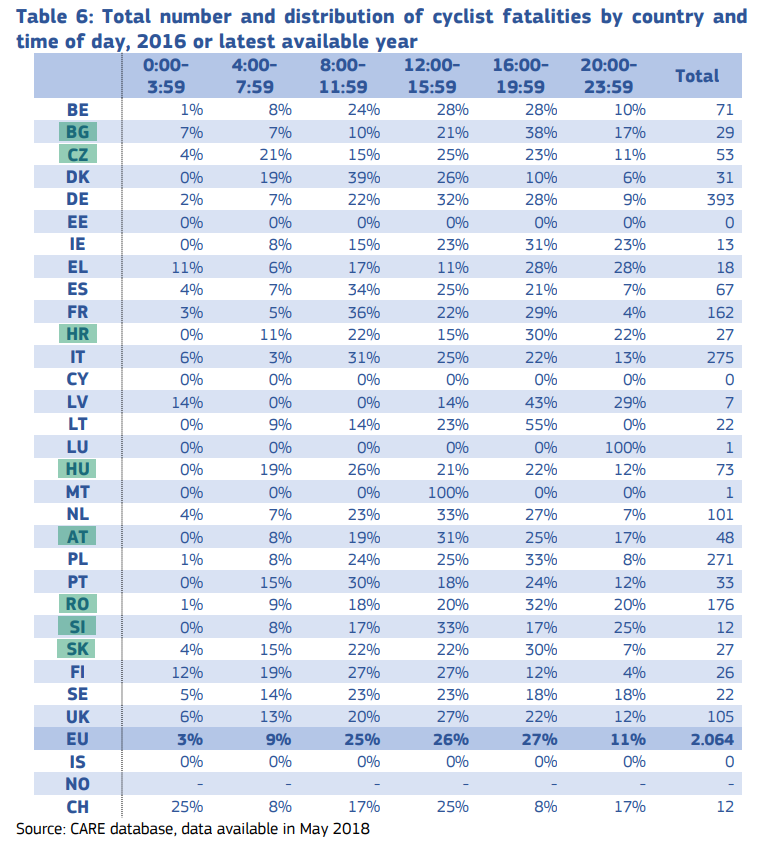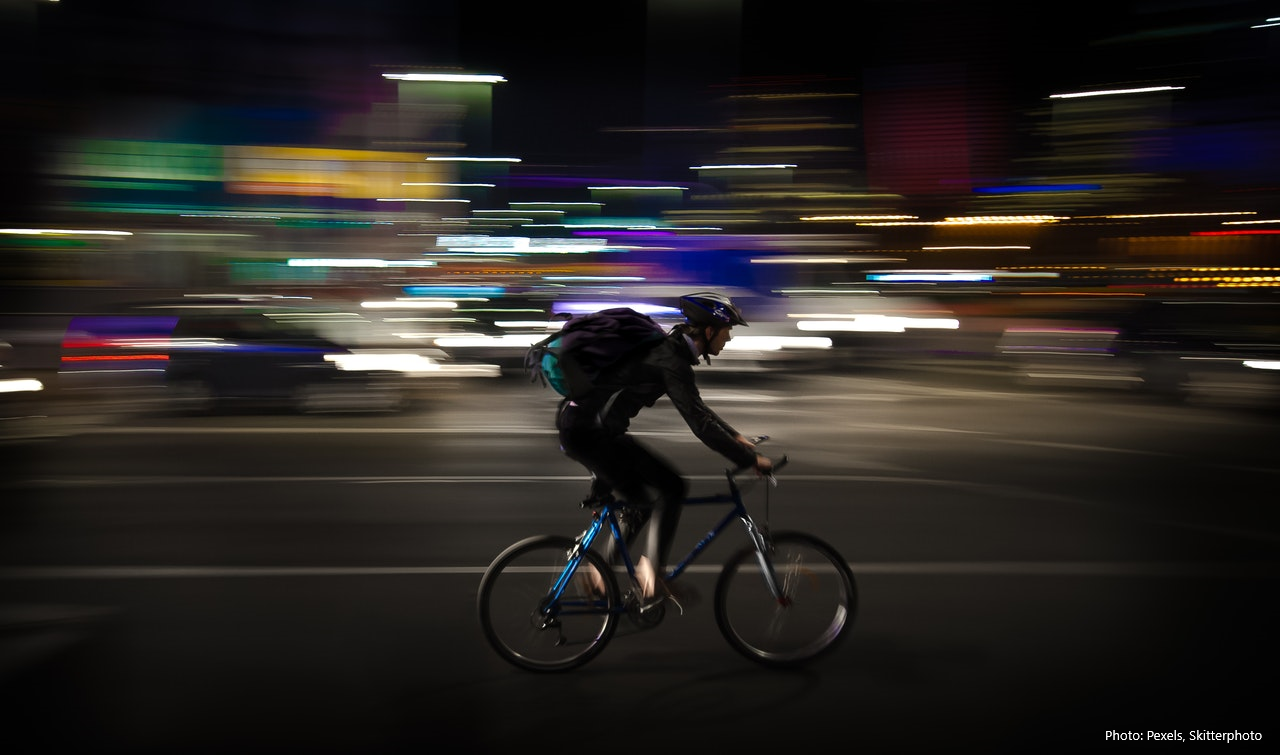SABRINA - MORE CAUTION IS NECESSARY WHEN CYCLING IN THE DARK
26-10-2020
Last Sunday in October 2020. Beautiful sunny weather. Perfect for a post-lunch bike ride. But the sunset happened already before 5 pm. So early? Luckily, I had lights on my bike.
Of course, the time switching! In the European Union (EU) last Sunday in October is the end of the so-called summer-time period, so the clocks need to be moved backward for one hour. This marks the beginning of wintertime which lasts until the last Sunday in March when we put the clocks again forward by one hour. Summertime arrangements were introduced by the European countries to save energy, mostly during the oil crisis of the 1970s. The first legislation in this area was adopted by the EU in 1980. Currently, summertime arrangements are governed by a Directive 2000/84/EC, setting out the obligation to all member states to switch clocks twice a year. But for how long?
The proposed changes for time switching in the EU
The system of bi-annual clock changes has been questioned on many different levels in recent years. In September 2018, the European Commission presented a proposal to end seasonal time changes, since the original argument to save energy is not valid anymore. The public consultation, carried out by the Commission, generated around 4.6 million replies and showed that 84 % were in favor of ending the bi-annual clock changes. In December 2018 the meeting of transport ministers concluded the EU countries needed more time for further consultations, since the main questions about which time they want to stick with and what would be the effects on the functioning of the internal market in this regard, still remain. After a lot of discussion back in 2018 and some expectations to change the clock for the last time in 2021 at the latest, the efforts on the EU level have stopped. The Commission needs to report on the implementation of the new Directive on discontinuing seasonal changes in time until the end of 2024 at the latest. So, for now, we will keep on changing our clocks twice a year.
Do seasonal changes in time influence road safety?
 According to the European Commission’s report on pedestrians and cyclists from 2018, cyclists comprise around 8% of all road traffic deaths in the EU countries. That means more than 2000 cyclists were killed and much more seriously injured. “Evidence remains inconclu- sive about the relationship between summer-time arrangements and road traffic accidents. Some studies show that sleep deprivation from advancing the clock in spring would increase the risk of accidents. It is, however, generally difficult to directly attribute the effect of summer-time arrangements on accident rates as compared to other factors.” (COM 2018, 639 final 2018/0332)
According to the European Commission’s report on pedestrians and cyclists from 2018, cyclists comprise around 8% of all road traffic deaths in the EU countries. That means more than 2000 cyclists were killed and much more seriously injured. “Evidence remains inconclu- sive about the relationship between summer-time arrangements and road traffic accidents. Some studies show that sleep deprivation from advancing the clock in spring would increase the risk of accidents. It is, however, generally difficult to directly attribute the effect of summer-time arrangements on accident rates as compared to other factors.” (COM 2018, 639 final 2018/0332)
The European Commission’s Traffic Safety Basic Facts on Cyclists from 2018 states, accidents happen because drivers may not notice pedestrians and bicyclists due to the fact they are poorly visible. The visibility is even worse at dusk, dawn, and night, especially when public lighting is absent or weak. The data in table 6 shows there is no clear trend in the time of cycling accidents for individual countries. Some differences might be due to different daily cycling patterns due to climatic conditions. However, overall, in the EU most cyclist fatalities occurred in the 12:00-16:00 period (26%) and in the 16:00-20:00 period (27%). There is also no specific trend for the SABRINA project partners’ countries (highlighted in the table; Moldova not included in the report), but for more than half of them most cycling accidents also happen between 16:00 and 20:00.
Cyclists should be visible on the roads
The general public agreement is that vulnerable road users, amongst which are also the cyclists, are less visible at night. There are many things cyclists can do to increase their visibility, such as wearing reflecting clothes and installing bike lights. Vehicle drivers also need to keep in mind there might be cyclists on the road, even when they do not expect them. But a lot can be done to prevent accidents also from an infrastructural point of view.
The inspiration for the SABRINA project were the results of the SENSoR project in the framework of which almost 20,000 km of roads in 14 countries of Southeastern Europe (SEE) were inspected according to EuroRAP protocol between 2012 and 2014. Among many helpful facts, the results also revealed that approximately 80% of roads in SEE only have a 1- or 2-star rating for cyclists. The global goal is to have roads for all road users rated 3-star or better. For cyclists that means roads with an on-road cycle lane, good road surface, max 60 km/h traffic, and also street lighting.
 According to iRAP (International Road Assessment Programme), every additional star rating results in a halving of crash costs in terms of the number of people who are killed and seriously injured. Halving road deaths and injuries by 2030 is also the goal of the Second decade of Action for Road Safety (2021-2030) proclaimed by the United Nations General Assembly in August 2020. In the SABRINA project team, we know cycling infrastructure in the Danube region is largely in an early stage of development, especially outside of the major urban areas. Therefore, we strive to help decision-makers to plan, design, and implement safe and sustainable solutions for improved cycling infrastructure in the region. Until we can make sure we will all bike on 3-star or better roads, let’s make sure we take care of ourselves and each other whether we are on the bike or in the car, sharing the road with the cyclists. Especially now, when the days are much shorter and the visibility of the cyclists on the road is low.
According to iRAP (International Road Assessment Programme), every additional star rating results in a halving of crash costs in terms of the number of people who are killed and seriously injured. Halving road deaths and injuries by 2030 is also the goal of the Second decade of Action for Road Safety (2021-2030) proclaimed by the United Nations General Assembly in August 2020. In the SABRINA project team, we know cycling infrastructure in the Danube region is largely in an early stage of development, especially outside of the major urban areas. Therefore, we strive to help decision-makers to plan, design, and implement safe and sustainable solutions for improved cycling infrastructure in the region. Until we can make sure we will all bike on 3-star or better roads, let’s make sure we take care of ourselves and each other whether we are on the bike or in the car, sharing the road with the cyclists. Especially now, when the days are much shorter and the visibility of the cyclists on the road is low.
![]()



